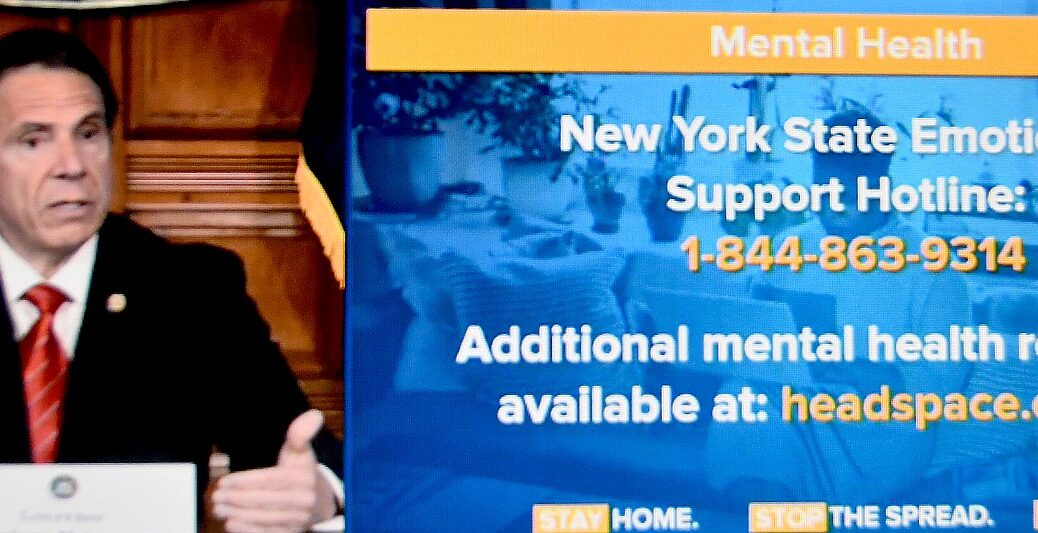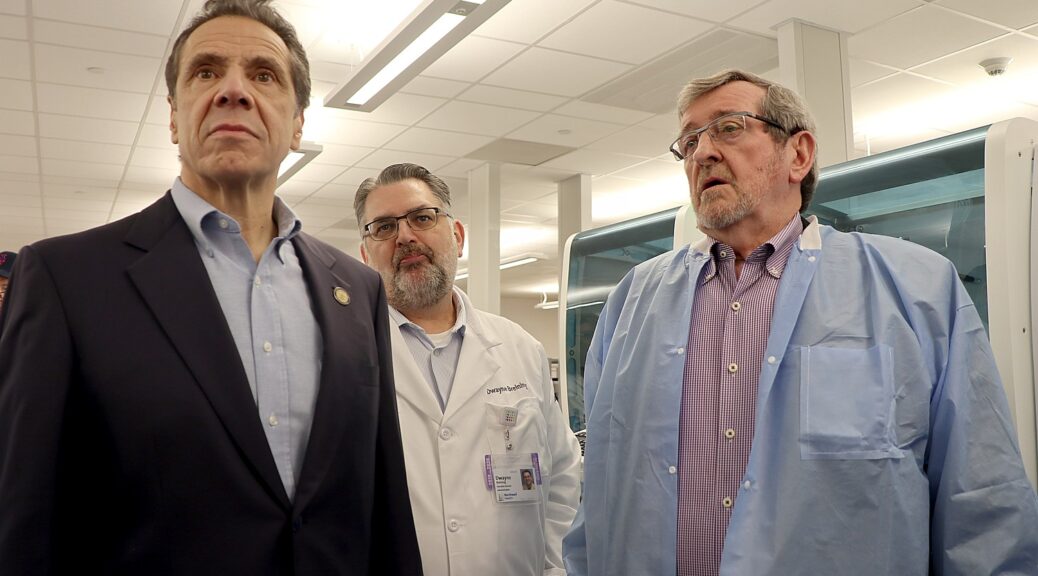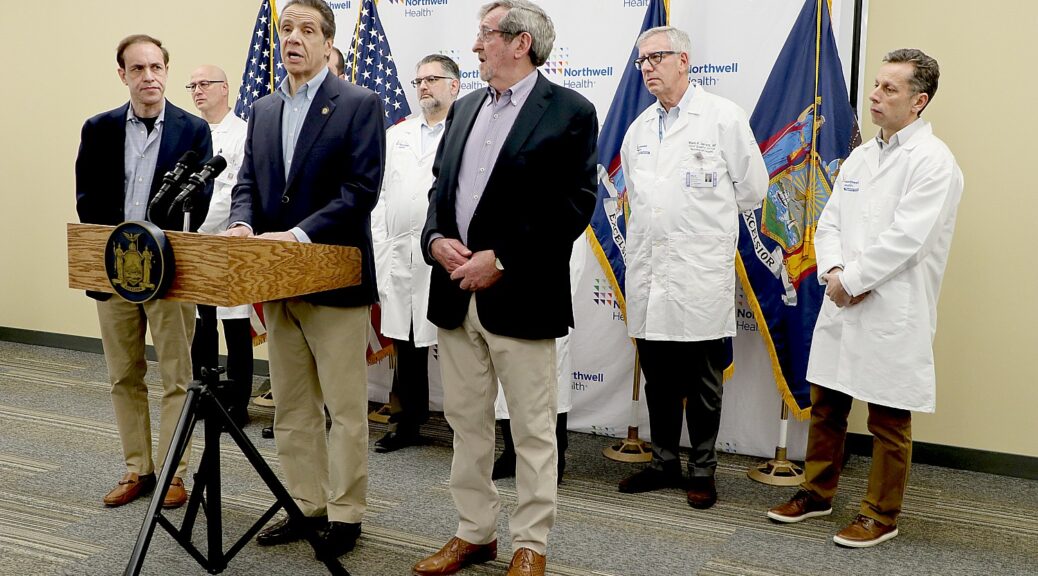
By Karen Rubin, News-Photos-Features.com
Amid the ongoing COVID-19 pandemic, Governor Andrew M. Cuomo today announced all K-12 schools and college facilities statewide will remain closed for the rest of the academic year and will continue to provide distance learning during that time. The schools will also be required to continue meal programs and child care services for essential workers. The state will make a decision about summer school programming by the end of May.
Also, the Governor today issued an executive order delaying school board elections and budget votes statewide until June 9, 2020. The school board elections and budget votes will all be conducted by mail and all qualified voters will be sent an absentee ballot with return postage paid. The Executive Order also delays local special district and village elections until September 15, 2020.
Governor Cuomo is directing all schools and colleges to create re-opening plans that re-imagine school facilities in light of the COVID-19 pandemic. These plans should consider how schools can monitor the spread of COVID-19; how to reinforce student safety; when and how to resume extracurricular activities; protocols for special student populations; steps to ensure student mental health; alternative academic calendars; among other considerations. All plans will be reviewed and approved by the state.
The Governor announced the state is partnering with the Kate Spade New York Foundation and Crisis Text Line to provide a 24/7 emotional support service for frontline health care workers. Those workers can text NYFRONTLINE to 741-741 to access these emotional support services.
The Governor also announced that the State Department of Financial Services will require New York State-regulated health insurers to waive cost-sharing, including deductibles, copayments and coinsurance, for in-network mental health services for New York’s frontline essential workers during COVID-19. DFS will also issue an emergency regulation to prohibit insurers from imposing cost-sharing for telehealth and in-person mental health services rendered by in-network providers on an outpatient basis to frontline essential workers eligible to be tested at one of the State’s drive through or walk in COVID-19 testing sites.
“This COVID crisis has caused significant disruption and many unintended consequences, and ancillary issues that have developed, and one of them is when you have people who are put in this situation immediately with no notice, it has caused serious mental health issues,” Cuomo said. “You have anxiety, depression, insomnia, loneliness, that feeling of isolation. We’re seeing the use of drugs go up. We’re seeing the use of alcohol consumption go up. This is a chronic problem. If you are feeling these issues, you are not alone. As a matter of fact, half of all Americans have said that their mental health has been negatively impacted. Don’t underestimate the stress of the situation, and it happens on a lot of levels. Three out of four say that their sleep has been affected. You do not know where your next paycheck is coming from. You do not know if your job is going to exist. You are at work one day, the next day they say everything is closed, stay in the house. You are in that house, in a confined situation, or you’re in an apartment and in a confined situation. You can’t get out. It is difficult for emotional support, we have a hotline set up. People shouldn’t be shy in any way or have any second thoughts about calling for help. It is a pervasive problem, and people should make a call and get the help if they need the help.
“We also see, in line with what we’re talking about, a dramatic increase in the incidence of domestic violence. There was a 15 percent increase in March. A 30 percent increase in April. That is – March is when this started, 15 percent. April, 30 percent. That is a frightening rate and level of increase. Again, New Yorkers in need, we have a domestic violence helpline – 844-997-2121. You can call, just discuss the issue. You don’t have to give your identity, or say where you live, but people who need help should reach out. There is no shame in reaching out and saying, ‘I need help.’ This is a national epidemic. It is a statewide epidemic. Ask for help, and we are here to help.
“We are especially concerned about these issues for frontline workers. I mean, just think about what the frontline workers are going through. Think about what the healthcare workers are going through. They’re working extended hours. They’re seeing a large number of people die. They’re working in very frightening situations. They’re worried about their own health. They’re worried they get infected, they then have to go home, worry if they’re infected and bringing that infection home.
“So, this is a terribly, stressful, difficult time, especially for the frontline workers, and we want them to know that we not only appreciate what they are doing, but we are there to support them, right? Saying thank you is nice. Acting in gratitude is even nicer. We have a special emotional support hotline for our essential workers. And we are also going to direct all insurers to waive any cost-sharing, co-pay deductibles for mental health services for essential workers, which means the mental health services will be free for frontline workers. And they will be at no cost. And too many families and people have said to me, ‘You know, I would go for services, but I do not want to pay the cost. I can’t afford it. I don’t want to take that money from my family.’ That’s gone. There is no cost to get mental health services, so just wipe that reason away, and get the help that you need. It’s even in the best interest of your family.”
The Governor also announced new targeted efforts to further reduce the number of new hospitalizations per day, which has remained steady at approximately 1,000 over the last several day. This new effort will gather additional information and data from hospitals about the individuals who are being hospitalized for COVID-19, including if they are essential workers, where they work, how they commute, where they live and other demographics. This specific information and data from the hospitals will be used to come up with a new strategy more tailored to the reduction of new daily hospitalizations.
The Governor also announced five new drive-through testing facilities have opened and are now accepting patients in Monroe, Erie, Broome, Niagara and Oneida Counties. Residents who would like to be tested at these facilities must make an appointment by calling 888-364-3065 or online at covid19screening.health.ny.gov.
The location new facilities are:
Niagara County: Niagara County Community College, 3111 Saunders Settlement Rd, Sanborn, NY 14132
Erie County: Buffalo Sabres Lot, 125 Perry Street, Buffalo, NY 14204
Broome County: Binghamton University – Event Center (Lot F/F3)
Monroe County: Monroe County Community College, 1000 E Henrietta Road, Rochester, NY 14623, Lot G
Oneida County: Griffiss International Airport, 592 Hanger Road, Rome NY, 13441
“It’s critical that we protect our students from this virus, and given the current circumstances we are in we do not think it is possible to put the necessary precautions in place that would allow us to re-open schools this academic year,” Governor Cuomo said.”All schools and colleges will continue to provide distance learning, meal delivery and child care services for the remainder of the school year. And in the meantime, we want schools to start developing a plan to re-open with new protocols that incorporate everything that we are now doing in society and everything that we have learned from this pandemic. This has been a hardship on everyone, but our educators across the state have done a phenomenal job stepping up to make the best of this situation.”
About mounting a mail-in vote for School budgets and board members, Cuomo said, “We’ve made great progress to reduce the spread of the COVID-19 virus, but we still don’t know when this pandemic will end and we don’t want to undo all the work we’ve already done to flatten the curve. We don’t want to put New Yorkers in a situation where they are possibly putting their health at risk, so we are delaying school board elections and conducting them by mail and delaying all local special district and village elections to help limit any unnecessary exposure to this virus among both voters and poll workers.”
Cuomo credited the social distancing and lockdown with saving 100,000 people from contracting COVID-19 and thousands who would have died.
“What happened is, New Yorkers, Americans, changed reality. Literally changed reality. They literally changed the path of the virus spread and reversed the spread. That’s what the close down procedures did, that’s what the masks have done, that’s what the social distancing has done. New Yorkers and all across this country, you saw that number change from that up trajectory to the downward trajectory.
“That shift in the trajectory reduced, by about 100,000, the number of New Yorkers who would have been hospitalized. One hundred thousand hospitalized. To be hospitalized you have to be seriously ill. A portion of those 100,000 would have passed away. So all this inconvenience, this turmoil, for what? To keep 100,000 people out of hospitals. That’s for what. The 100,000 in the hospitals would have overwhelmed the hospital system, would have been chaotic. That’s where Italy was and a number of those 100,000 would have died. So remember that context. Not just for the retrospective, but for the perspective.
“Our past actions changed the path’s trajectory. Our present actions will determine the future trajectory. It is that clear. It is cause and effect. You tell me what we do today, I will tell you the number of people sick tomorrow. So, everyday we get up, everyday everyone says, “Oh my gosh, I have to do this again.” Yes, but what you do today is going to determine the number of sick tomorrow. New Yorkers have continued to do what they have to do. You see that number of hospitalizations dropping. That is all good news and that is a credit to the community and the social conscience and the responsibility of New Yorkers.”
Indeed, even though the numbers of infected, of hospitalized, of incubated and of dead have declined, still, the number of new hospitalizations per day have hovered around 1,000.
“Let’s drill down on those 1,000 new cases,” Cuomo said. “Where are they coming from? Why is the infection rate continuing? Who’s getting infected? Let’s get more targeted in our response. We’re fighting this statewide, but you have to wage the battle, wage the war on many fronts. It’s a statewide battle. Now that we have it basically stabilized and on the decline, the enemy is on the run. The virus is reducing, let’s get more refined, more targeted. I’m going to be speaking with the hospitals this afternoon and say that we want to get more specific information on those new cases that are coming in the door.”
The Governor confirmed 3,942 additional cases of novel coronavirus, bringing the statewide total to 308,314 confirmed cases in New York, more than any other country. The number of people confirmed to have died of COVID-19, 18,610, exceeds every other nation in the world.
Of the 308,314 total individuals who tested positive for the virus, the geographic breakdown is as follows:
| County | Total Positive | New Positive |
| Albany | 1,204 | 39 |
| Allegany | 35 | 0 |
| Broome | 299 | 15 |
| Cattaraugus | 49 | 2 |
| Cayuga | 51 | 3 |
| Chautauqua | 35 | 2 |
| Chemung | 123 | 1 |
| Chenango | 99 | 1 |
| Clinton | 61 | 2 |
| Columbia | 202 | 32 |
| Cortland | 28 | 0 |
| Delaware | 61 | 0 |
| Dutchess | 3,002 | 48 |
| Erie | 3,481 | 162 |
| Essex | 28 | 0 |
| Franklin | 15 | 0 |
| Fulton | 75 | 4 |
| Genesee | 154 | 1 |
| Greene | 139 | 8 |
| Hamilton | 3 | 0 |
| Herkimer | 60 | 2 |
| Jefferson | 61 | 0 |
| Lewis | 9 | 0 |
| Livingston | 73 | 4 |
| Madison | 139 | 8 |
| Monroe | 1,478 | 37 |
| Montgomery | 54 | 1 |
| Nassau | 36,161 | 307 |
| Niagara | 440 | 20 |
| NYC | 169,690 | 2,212 |
| Oneida | 451 | 12 |
| Onondaga | 860 | 28 |
| Ontario | 91 | 1 |
| Orange | 8,751 | 101 |
| Orleans | 92 | 3 |
| Oswego | 64 | 1 |
| Otsego | 67 | 0 |
| Putnam | 990 | 20 |
| Rensselaer | 298 | 11 |
| Rockland | 11,812 | 104 |
| Saratoga | 358 | 4 |
| Schenectady | 514 | 13 |
| Schoharie | 43 | 1 |
| Schuyler | 7 | 0 |
| Seneca | 41 | 2 |
| St. Lawrence | 176 | 3 |
| Steuben | 216 | 0 |
| Suffolk | 34,037 | 373 |
| Sullivan | 880 | 42 |
| Tioga | 90 | 2 |
| Tompkins | 128 | 0 |
| Ulster | 1,298 | 19 |
| Warren | 182 | 6 |
| Washington | 170 | 22 |
| Wayne | 71 | 0 |
| Westchester | 29,232 | 262 |
| Wyoming | 68 | 1 |
| Yates | 18 | 0 |
________________________
© 2020 News & Photo Features Syndicate, a division of Workstyles, Inc. All rights reserved. For editorial feature and photo information, go to www.news-photos-features.com, email [email protected]. Blogging at www.dailykos.com/blogs/NewsPhotosFeatures. ‘Like’ us on facebook.com/NewsPhotoFeatures, Tweet @KarenBRubin





